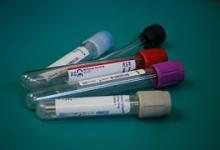Ianalumab Shows Phase 3 Success in Sjögren’s: Is It Clinically Meaningful? Save

ACR 2025 opened with the Year-in-Review session, which highlighted a symbolic shift in Sjögren’s, with it being officially reclassified as Sjögren’s disease (SjD). This change signals more than updated nomenclature. It reflects decades of scientific and patient advocacy to recognize Sjögren’s as a distinct systemic autoimmune disease with major impact on daily function, fatigue, and oral-ocular health.
On the final day of the meeting, late-breaking abstract #24 drew particular attention, presenting results from the first positive Phase 3 trials of a potential systemic treatment for a disease that has long lacked one.
NEPTUNUS-1 and NEPTUNUS-2 were two large, global, 52-week, randomized, double-blind, placebo-controlled trials evaluating Ianulumab, an afucosylated IgG1 monoclonal antibody that combines B-cell depletion via enhanced ADCC with BAFF-receptor blockade. All participants met the 2016 ACR/EULAR classification criteria (ESSDAI ≥ 5) and could continue stable background therapy (HCQ, MTX, AZA, or prednisone ≤10 mg/day), reflecting real-world practice.
The primary endpoint in both trials was the difference in change from baseline in ESSDAI between Ianulumab and placebo at Week 48.
• In NEPTUNUS-1 (two-arm; Ianulumab QM 300 mg monthly vs placebo), the mean ESSDAI improvement was –6.4 vs –5.1 (Δ –1.3 [95 % CI –2.6, 0]; p = 0.0496).
• In NEPTUNUS-2 (three-arm; Ianulumab QM, Ianulumab Q3M, and placebo), the difference in ESSDAI change for QM vs placebo was statistically significant (Δ –1.0 [95 % CI –2.0, 0]; p = 0.041), whereas Q3M vs placebo did not reach significance (Δ –0.5; p = 0.34).
The absolute between-group differences ranged from 0.5 to 1.3, below the accepted minimum clinically important improvement (MCII ≈ 3) for ESSDAI. Placebo groups showed unexpectedly robust improvement of about –5 points, highlighting the influence of active background therapy and the intensity of study follow-up, both of which can drive symptom improvement even without experimental treatment.
If the primary endpoint met the statistical bar, what about secondary outcomes?
A reduction in ESSDAI ≥ 5 points was achieved in 57 percent of patients on Ianulumab QM versus 48 percent on placebo, numerically higher but not statistically significant. Similarly, reaching low disease activity (ESSDAI < 5 at Week 48) occurred in about 53 percent versus 45 percent of patients, again a modest and borderline difference. Physician- and patient-global assessments improved compared with placebo (p ≈ 0.005 in pooled analyses), suggesting some subjective benefit, particularly among those with more symptomatic disease at baseline. Post-hoc analyses hinted at functional gains: patients with preserved salivary flow (>0.4 mL/min) showed greater increases in flow rate and reduced oral-dryness scores compared with placebo.
Pooled analyses across NEPTUNUS-1 and -2 strengthened statistical power but should be interpreted cautiously. The trials differed in design (two- vs three-arm) and geographic distribution, and pooling can overstate consistency or precision if heterogeneity is present.
Safety findings were reassuring. Overall adverse-event rates were comparable between Ianulumab QM and placebo (about 65 percent), with serious infections ≤3 percent and no new safety signals or malignancy imbalances. The double-blind design maintained for all 52 weeks lends confidence that observed differences reflect a true drug effect rather than bias.
For a disease with no approved systemic therapy, the NEPTUNUS trials represent real progress. The consistency across two global studies, alignment of physician- and patient-reported gains, and biologic plausibility make Ianulumab the most advanced candidate yet in SjD. Still, as Sjögren’s transitions from “syndrome” to “disease,” expectations should rise accordingly: clinical significance, not just statistical separation.











If you are a health practitioner, you may Login/Register to comment.
Due to the nature of these comment forums, only health practitioners are allowed to comment at this time.